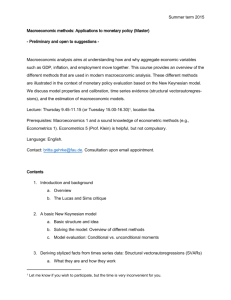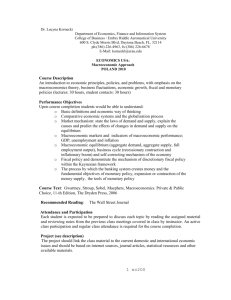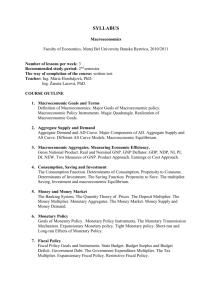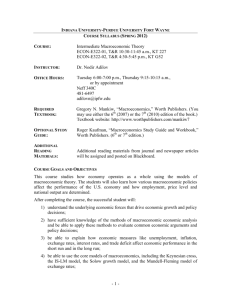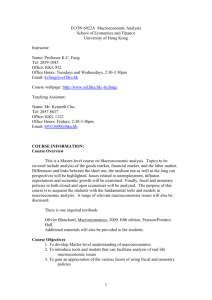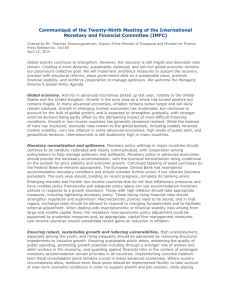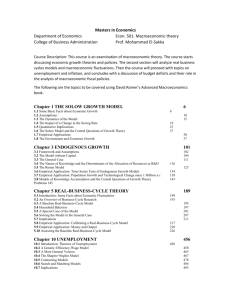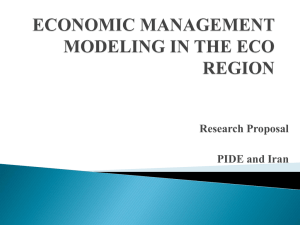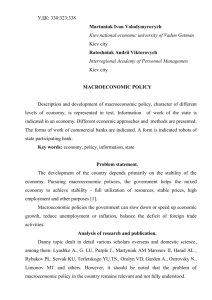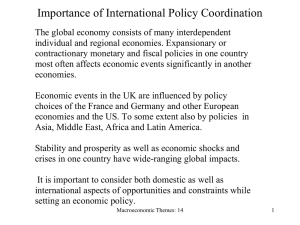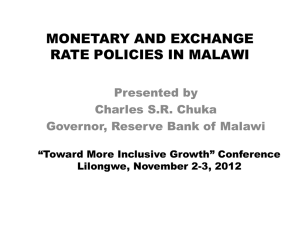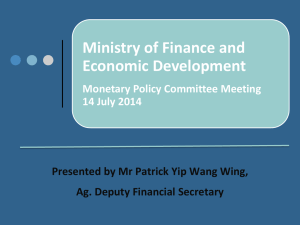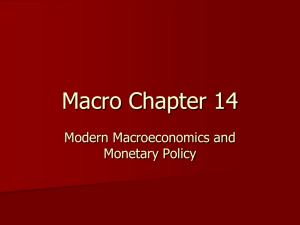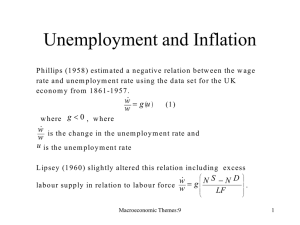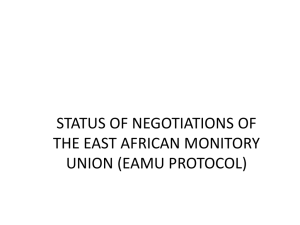How Macroeconomic Policy Can Support Economic Development in
advertisement
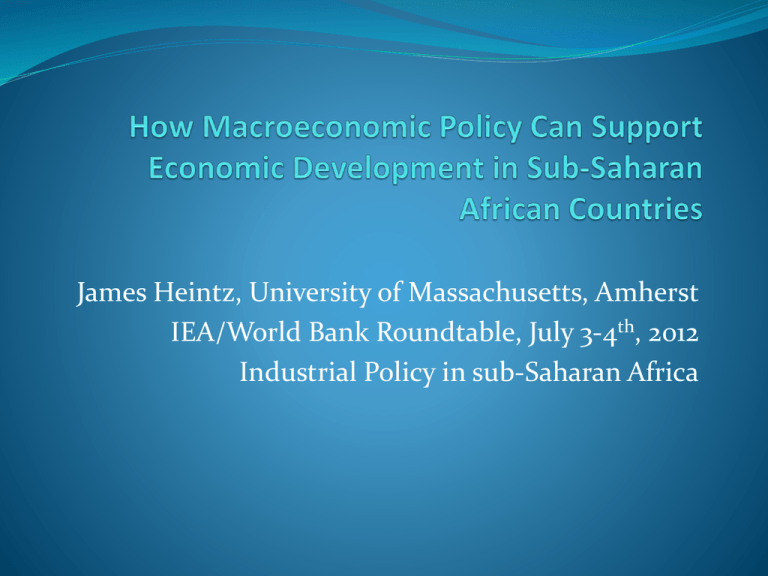
James Heintz, University of Massachusetts, Amherst IEA/World Bank Roundtable, July 3-4th, 2012 Industrial Policy in sub-Saharan Africa Macroeconomic policy and industrial policy Conventional wisdom: macroeconomic policy creates the enabling environment for industrial policy. Industrial policy manages the details of economic development within the boundaries determined by macroeconomic management. Argument of this paper: in sub-Saharan Africa, institutional and structural constraints limit the scope for conducting macroeconomic policy. Challenge: to relax structural constraints which would replenish the macroeconomic toolkit Example: Liberia Context: ILO study of the impact of the crisis on Liberia Balanced budget constraint imposed. Market for government bonds did not exist. Economy was largely dollarized. Trade taxes accounted for a large share of revenues Almost no scope for any kind of macroeconomic policy But the institutional constraints could be relaxed to support productive sector development. Three policy areas Real exchange rate Monetary and financial sector policy Fiscal policy: domestic resource mobilization Real exchange rate Maintain real exchange rate at a level which encourages allocation of productive resources to tradable sector Economies of scale, scope for productivity improvements, access to export markets. But can interventions to manage the nominal exchange rate work in SSA? High levels of pass-through. Little scope for lowering the real exchange rate Domestic price levels Average price levels are higher in sub-Saharan African countries compared to countries with similar productivity levels. Reduces competitiveness of tradable sector. Indicator of relative prices: PPP conversion factor to nominal exchange rate ratio. Pi = α + βlnGDPi + δdi + ei -0.51 0.14 0.11 (-6.1) (14.6) (3.4) Macro conditions for competitiveness Problem: high domestic prices can lead to an uncompetitive real exchange rate. Possible reason: lower productivity of the non-tradable sector (e.g. infrastructure, distribution services, etc). Solution: raise productivity of the non-tradable sector, rather than manipulating the nominal exchange rate. Monetary policy I Inflation targets and inflation targeting May introduce a pro-cyclical bias into monetary policy formulation when inflation due to supplyside/external price shocks is common. Hard to isolate a measure of “core inflation” in many sub-Saharan African countries. Need for a broader approach to monetary policy, including developing indicators for real economic activity. Monetary Policy II Even in the absence of strict inflation targets, can monetary policy support industrial development through credit extension? Institutional problems in SSA: excess reserves in the commercial banking sectors constrains credit extension. Other issues: limited long-run credit due to structure of deposits, imperfect information. Possible solution: financial sector reforms which improve credit allocated to industrial development which goes beyond liberalization. Mobilizing domestic resources Tax revenues: tax revenues in sub-Saharan Africa, as a share of GDP, have increased since the 1980s, but much of this improvement has been driven by revenues from natural resource exploitation. Institutional weaknesses/poor tax administration constitute barriers to mobilizing resources in the region . Two interventions: re-organizing the administration of tax collection on a functional basis establishment of statutory bodies which specialize in tax collection, but not tax policies Mobilizing domestic resources The ability to mobilize domestic credit to the public sector to support industrial development is constrained. Very high costs of domestic debt v. external debt. Short-term structure of debt & concentrated ownership raise costs of debt service. Institutional reforms could help change this situation: introducing longer term bonds, efforts to deepen the bond market (i.e. a wider range of ownership). Conclusions Need to go beyond seeing macro policy as simply creating an enabling environment. In order for macroeconomic policies to support industrial development, institutional reforms are needed to address existing problems which limit their effectiveness. Structural transformation is required to enhance and deepen the scope of macroeconomic management. The exact nature of the institutional and structural reforms would necessarily vary from one context to the next.
